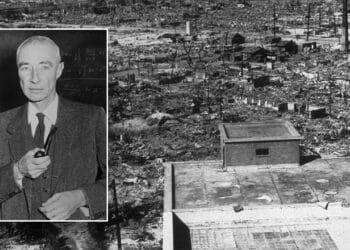[ad_1]
Across India, on average, the total rainfall in the 2022 monsoon season (it runs from June to September) has been “normal” since mid-June — suggesting that all appears to be well with the monsoon this year. However, a geographical breakup shows that this monsoon has been normal only by virtue of two polar opposite disasters: drought-like conditions across the Gangetic plains and floods in other parts of the country, of which the ones in Himachal Pradesh and Uttarakhand are the most recent.
This has created the worst geographical skew of monsoon between the Gangetic plains and the rest of the country in recorded history. This skew in turn has adversely affected the sowing of the kharif crops. While these patterns are unprecedented this year, they are not unexpected, as the charts here show.
Four states in the Gangetic plains have the biggest and most widespread deficit
There has been 674.9mm of rain between June 1 and August 20 in India, according to India Meteorological Department’s (IMD) gridded database, 10.5% more than what is officially considered “the normal” or the average rainfall in the 1961-2010 period.
After June, it has also been distributed well over time, with only 18 days of deficit rainfall after June. However, this is not accurately reflective of how different parts of the country have experienced rainfall. In the four states of the Gangetic plains – Uttar Pradesh, Bihar, Jharkhand, and West Bengal – a dry patch has continued since the beginning and created a deficit throughout the region.
Overall, 38% of the country (1,796 of the 4,685 grids that form India) has a deficit in cumulative rain so far. However, in the four Gangetic plains states, around 92% of the area (663 of 723 grids) has a deficit, with most of it (578 grids) having a deficit of 20% or more. In the rest of the country, only 29% of the area (1,133 or 3,962 grids) has a deficit with only half of that area (618 grids) having a deficit of 20% or more.
To be sure, the surplus rainfall in the rest of the country has not just been a beneficial counter-weight to the dry Gangetic plains. A large number of places have a surplus because they have experienced a large surplus of heavy and extreme intensity rainfall (that of more than 35.5 mm in a day) which can cause floods. Of the 4,685 grids, 1,994 have received heavy and extreme rain 20% or more than the 1961-2010 average this monsoon, and almost all of these (1,925 grids) are outside the four states of the plains.
One reason why central and peninsular India and parts of the north-west have received excess rainfall this monsoon is the position of the monsoon trough. An elongated low-pressure region that helps monsoon rains, the trough has remained south of its normal position for longer this year, leading to sporadic rainfall in the Gangetic plains, but regular rainfall elsewhere.
Maps 1 and 2
The contrast between the plains and the rest of the country is the worst in recorded history
The contrast between the regions of drought and flood this year is unprecedented. Two sets of numbers highlight different aspects of it. First is the region’s own rainfall: the June 1-Aug 20 rain for the Gangetic plains is the least since 1901 (the earliest for which IMD gives gridded data), and the third highest for the rest of the country.
This skew is also visible in the difference in the rain in the two regions. In the 1961-2010 period, rain in the June 1-August 20 period in the Gangetic plains was 16.8% more than in the rest of the country. This year it is 36.8% less compared to rest of India, the furthest behind it has ever been since 1901.
To be sure, although the skew this year is the worst ever, it is not unexpected. The departure of average monsoon rainfall in 2011-2020 compared to the 1961-2010 climate looks similar to the departure so far in 2022.
Map 3
The progress in paddy and arhar sowing is lagging more than in recent years
If we look at the last two years, around 95% of paddy sowing and over 100% of arhar sowing was already complete by this time of the year. This year, however, only 78% of paddy sowing and 92% of arhar sowing is complete so far – a likely outcome of the poor rainfall in the Gangetic plains and the heavy rainfall in other parts of the country.
“Sowing of rice during the ongoing kharif (summer) season continues to lag (-12.4% y-o-y), which suggests growing risk that this year’s rice output will be lower, due to lower acreage and yields. This will put further upward pressure on the price of domestic rice, which together with higher wheat prices (due to the heatwave), means higher cereal price inflation ahead,” Sonal Varma and Aurodeep Nandi said in a Nomura research note dated August 16.
To be sure, while the pressure on paddy prices this year can be eased with export bans, there is reason to work on a longer-term plan. In 2019, when the skew in monsoon was similar to this year and the third worst since 1901, paddy sowing was also similar to this year. If these geographical trends in rainfall are to continue, bans may not be the best long-term strategy, as they can adversely affect farmers’ income amid low yields.
Chart 1
[ad_2]
















